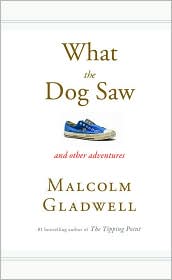Thought Leaders Unpacked -> What the Dog Saw #9: The Picture Problem
Friday, April 16th, 2010 Do my eyes deceive me? Can my eyes deceive me? Of course not, it’s right there in the picture!
Do my eyes deceive me? Can my eyes deceive me? Of course not, it’s right there in the picture!
The observation that we often put too much faith in pictures is fascinating. We assume seeing more and more clearly is always better.

We trust our eyes. We trust our eyes more than our other senses. We trust our eyes to the extent that we are willing to suspend our brain’s ability to discriminate and discern.
In this week’s chapter, “The Picture Problem,” Gladwell raises this interesting conundrum with his looks at mammography and satellite imagery.
This issue has to do with context. Interpreting a picture out of context, no matter how clear the image, is a risky and uncertain effort. Is the human shadow falling across your picture there because the sun in behind the photographer’s back or because a predator is sneaking up on you? The picture of the shadow can’t answer the question.
What’s interesting about this chapter is that our tendency is actually the opposite. If we have a clear picture, our confidence in our interpretation increases when it might need to decrease. Instead of asking more questions we ask less, shutting down vital inquiry when the conclusion seems so obvious because we saw a single thing clearly.
Pictures have value. Great value. But beware if they result in a willingness to think less instead of more, to jump to conclusions earlier than later, or to make the complex seem simple.
Where do you find yourself prematurely jumping to conclusions merely because you saw something? What was your main take-away from this chapter?


